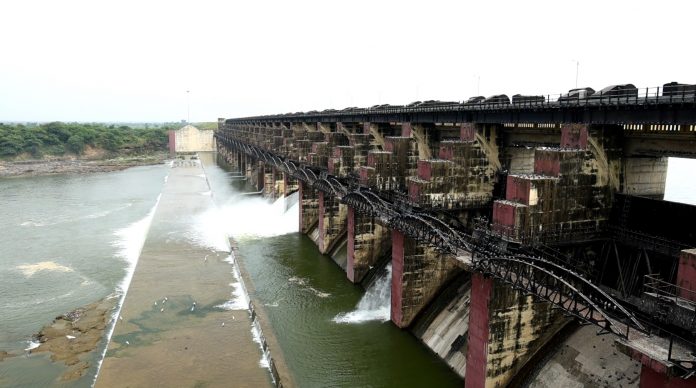Gujarat has thrived in agriculture and allied sectors, largely due to improved irrigation and innovative farming practices.
At the heart of this transformation lies the Sujalam Sufalam Yojana, a visionary initiative launched by Narendra Modi in 2003 during his tenure as Chief Minister.
This ground-breaking scheme was designed to combat water scarcity and revolutionize water management across the state.
Regions once plagued by drought–such as North Gujarat, Saurashtra, Kutch, and Central Gujarat–have experienced a remarkable turnaround.
The Sujalam Sufalam Yojana has not only rejuvenated agriculture but also strengthened communities, uniting the people of Gujarat in a shared commitment to prosperity and resilience.
During his visit to Gujarat, Prime Minister Narendra Modi stated, “We initiated the Sujalam Sufalam scheme, and I repeatedly express my gratitude to the farmers of North Gujarat for providing the land for it. A canal of approximately 500 kilometers was constructed without any legal disputes. People donated land for the canal, and water started flowing, raising the water level. Such an arrangement has been made so that maximum water is provided to the Sabarmati region.”
The Sujalam Sufalam Yojana aims to rejuvenate rivers, construct check dams, and promote water conservation across Gujarat.
This initiative seeks to enhance the state’s resilience to water shortages, boost agricultural productivity, and transform semi-arid regions into productive agricultural zones.
In the village of Malgarh Mama Nagar in Banaskantha district, farmers like Kalpesh Kumar Solanki, who owns 30 acres of land, have seen significant benefits. Previously struggling with declining water levels, Kalpesh now irrigates his fields using water delivered via PVC pipelines from the scheme.
This has increased his crop yields of peanuts, potatoes, and other vegetables, allowing him to grow more and earn higher profits. Additionally, clean water now reaches his home, meeting his household needs.
Kalpesh considers the scheme a miracle for farmers and expresses gratitude to Prime Minister Modi for his support.
“Earlier, there was a lot of drought here. We had significant water problems, and the groundwater level had dropped very low, which made farming difficult. Then, Narendra Modi Sahib launched the Sujalam Sufalam Yojana, which brought water to the ponds. After that, we started bringing pond water to our fields through PVC pipes. As a result, we began to grow vegetables in the fields,” Kalpesh said.
Kalpesh further added, “We plant potatoes in the winter and melons in the summer. During the rainy season, we plant peanuts, and we have had very good profits from those crops.”
Mangal Bhai Mali, another farmer in the village, shared, “A lot has changed; earlier, there was nothing in terms of animal husbandry or agriculture. Everything was barren, and the records reflect this. When the Modi government came, everyone became very happy. All the farmers express their gratitude to Prime Minister Modi.”
Carrying forward the legacy, Chief Minister Bhupendra Patel is emphasizing the construction of rainwater harvesting structures across Gujarat to boost agriculture and promote sustainability.
He highlighted the scheme’s success in increasing water conservation by over 11 lakh cubic meters and the construction of approximately 24,800 rainwater harvesting structures across the state.
Chief Minister Bhupendra Patel remarked, “Water harvesting is the need of the hour. In the direction of water conservation, the Honourable Prime Minister’s visionary initiatives have already brought about public awareness and participation, first in Gujarat and then across the country.”
The Sujalam Sufalam Yojana has been recognized by the World Bank for its focus on drought-proofing through groundwater recharge. Key components include pumping water to fill reservoirs, spreading canals, and constructing farm ponds.
The World Bank praised the state for increased groundwater levels, revived dug wells, expanded irrigation, and reduced energy use in water-deficit regions.
Experts have commended the Sujalam Sufalam Yojana for transforming Gujarat and establishing it as a model for other states in India.
Abhay Rawal, a water management expert, stated, “Today, Gujarat has become a role model in the field of water management, especially across the country, and the credit goes to Prime Minister Narendra Modi. When he was the Chief Minister of Gujarat, he laid the foundation for this, and today Gujarat has reached this position.”
When Narendra Modi assumed office as Prime Minister in 2014, he sought to replicate the success of Gujarat’s Sujalam Sufalam Yojana on a national scale.
This vision led to the launch of the Jal Shakti Abhiyan and Atal Bhujal Yojana, initiatives designed to empower communities in sustainable water resource management.
By fostering grassroots participation, these programs aim not only to rejuvenate water resources but also to showcase a model of collective action that can be scaled across the country.
Through these efforts, Prime Minister Modi is transforming water conservation into a movement, ensuring that every drop counts for a more resilient India.
(With inputs from ANI)











